BLISSFUL BALI
By Dustin O’Regan
Aerial view of Uluwatu Temple. Photography by R.M. Nunes
By Dustin O’Regan
Aerial view of Uluwatu Temple. Photography by R.M. Nunes
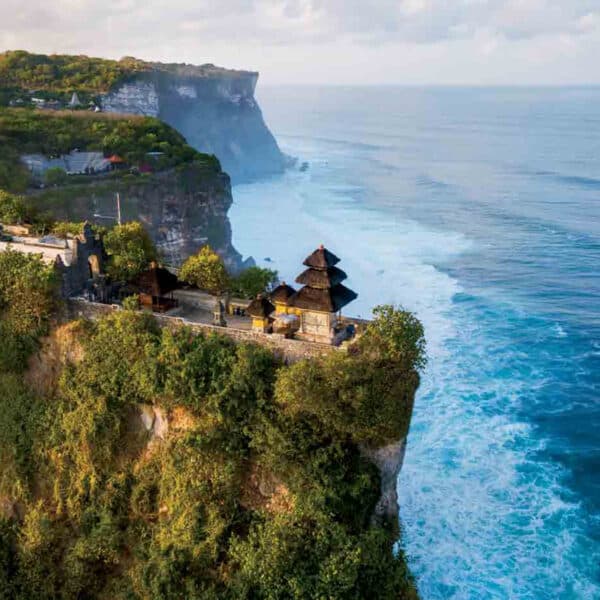
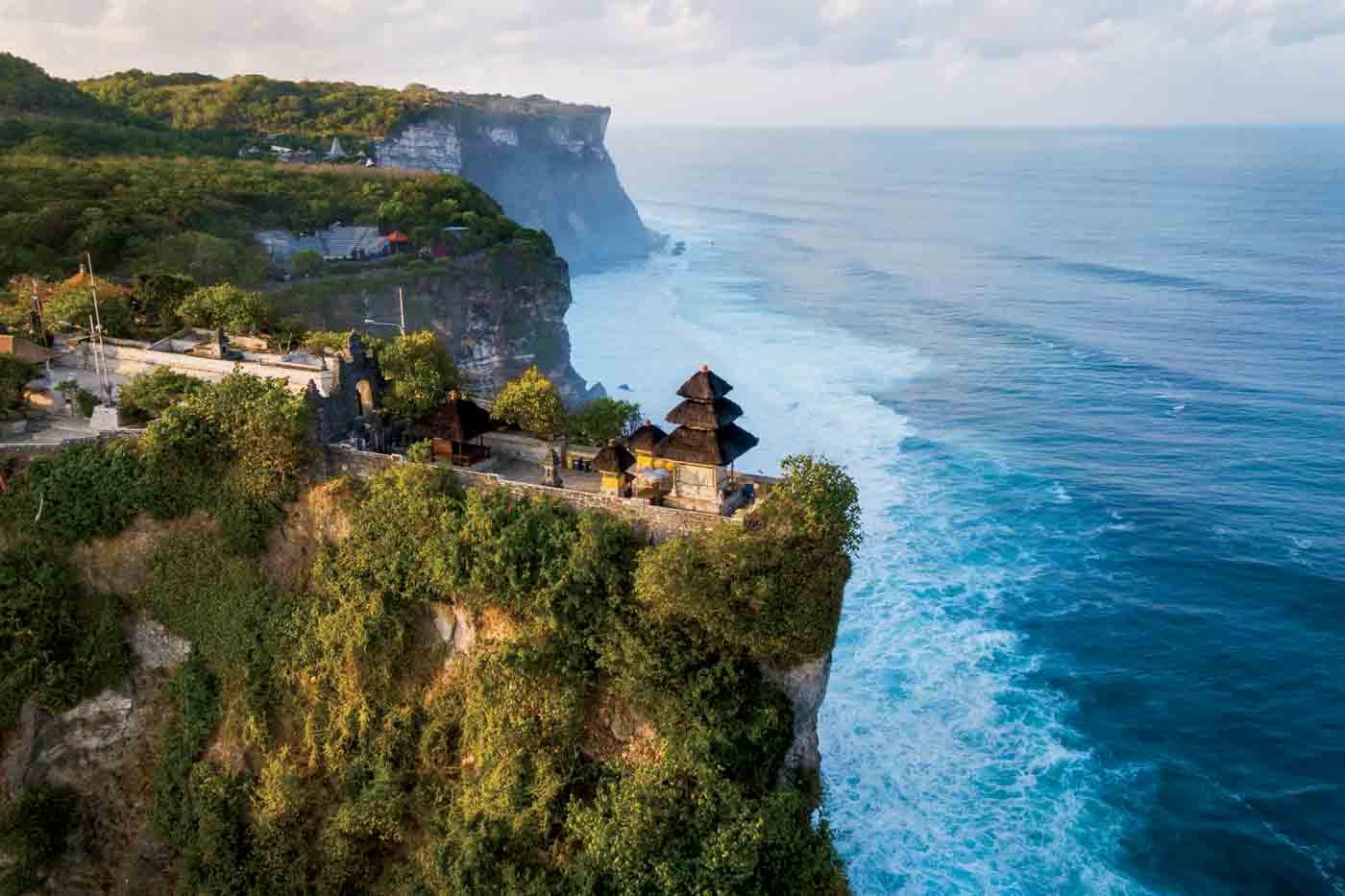
One of the many islands in Indonesia’s vast archipelago, Bali is known as “The Island of the Gods” as it is the most temple-dense area on earth—boasting more temples per square mile than anywhere else on the planet. A haven of Hinduism in a predominantly Muslim country, Bali is steeped in spirituality and the belief that balance equals harmony; a philosophy revealed in the kindness of her people.
Made famous by the movie Eat, Pray, Love starring Julia Roberts and Javier Bardem, Bali saw tourism explode in 2010. Millions of travelers are drawn to the culture, verdant landscape, sandy beaches, and ancient temples. On my journey, I explored both Bali’s stunning coastline and its lush interior rainforest, just a short drive apart on this relatively small island of 2,200 square miles.
After flying from Chicago to Hong Kong, our group took a direct flight into Bali’s capital, Denpasar. It is a 15-hour flight to Hong Kong and a 5 1/2-hour flight to Bali, so comfort is key. I chose my favorite airline, Cathay Pacific. After enjoying a delicious meal (Cathay prides itself on using the finest ingredients in dishes inspired by the flight’s destination), I drifted off to sleep in my luxurious, business-class accommodations and arrived refreshed despite the 14-hour time difference.
ULUWATU
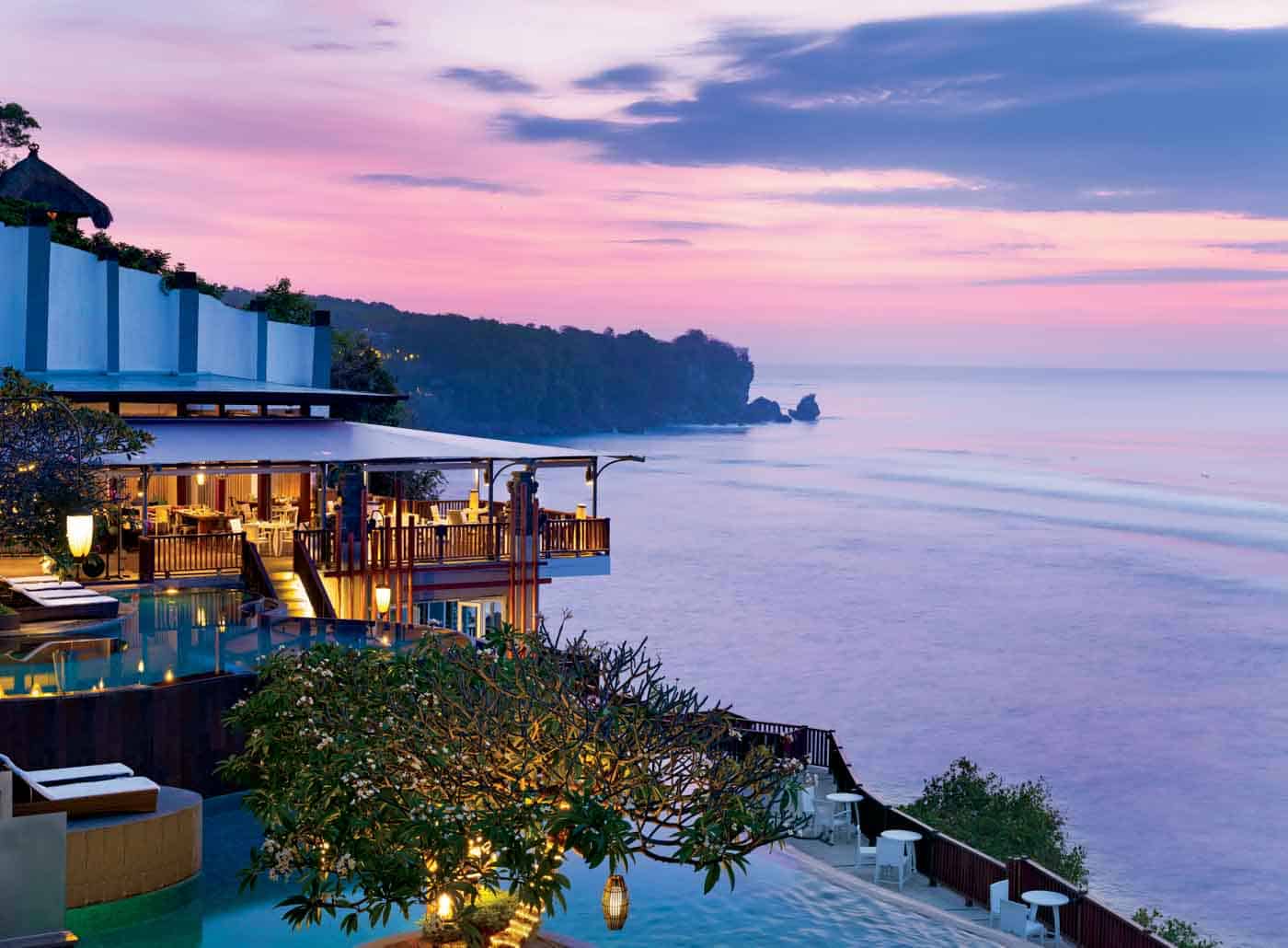
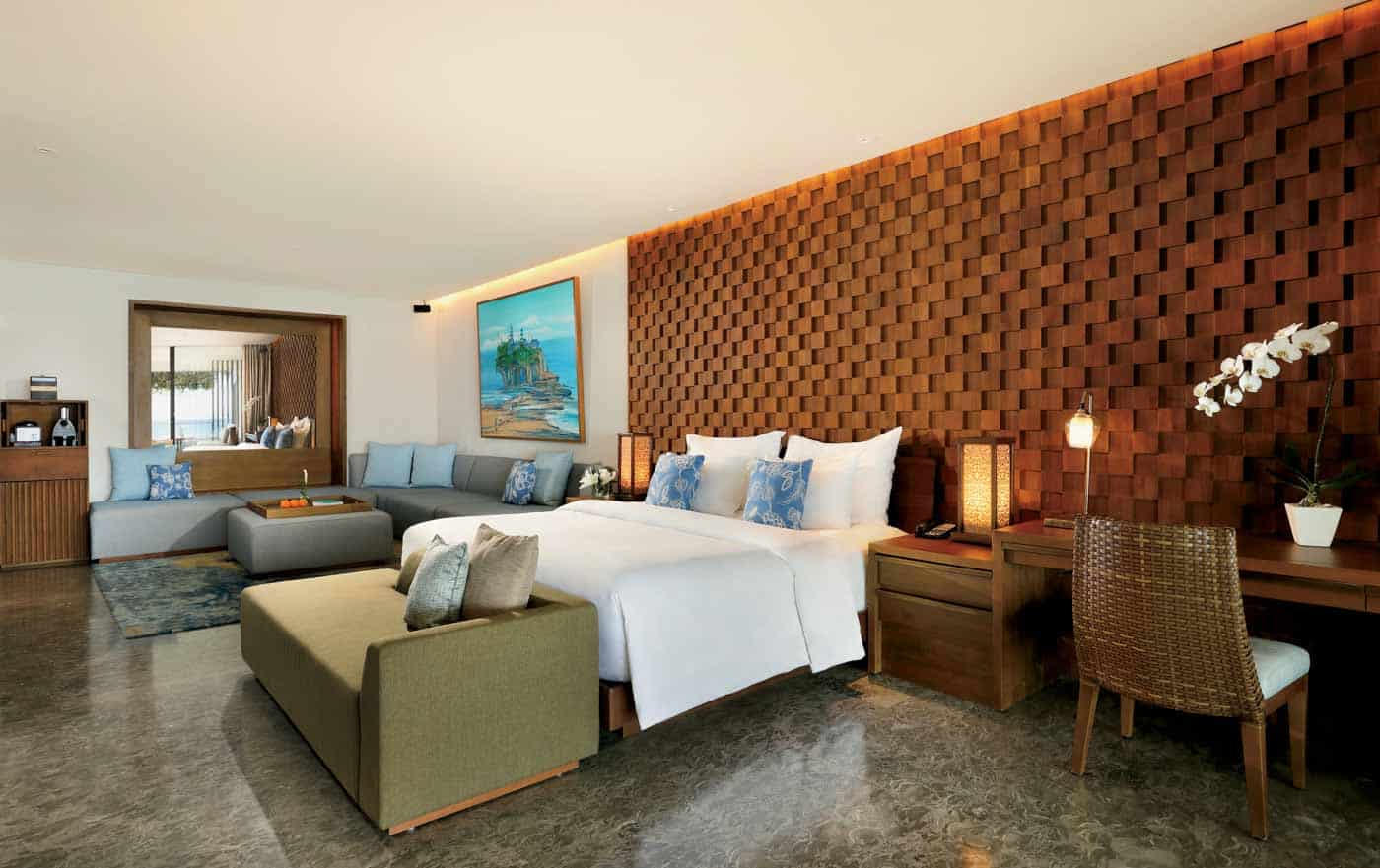
We began our visit in Uluwatu, located 40 minutes from the airport. Uluwatu is a lively surfer town where tourists zip around on motorbikes down busy, narrow streets. Yet, the commotion fell away as we entered the Anantara Uluwatu Bali Resort.
Perched high on a limestone cliff, the resort overlooks the Indian Ocean and the “Impossible Surf,” which provides some of the best surfing in the world. With only 73 suites, pool villas, and penthouses, the resort offers a boutique feel that ensures privacy and relaxation while beckoning travelers to slow down, unwind, and soak in stunning sunsets.
Cascading down the cliffside toward the ocean, the pool suites offer unparalleled views. My spacious suite boasted an entryway, a living room outfitted with an enormous couch that could have seated 15 of my closest friends, and a bedroom with a king-size bed topped with a darling towel sculpture of a Hindi priest and framed by a wall of woven Balinese wood. Just beyond the bedroom, an expansive patio with a hot tub and garden over-looked the ocean’s turquoise waters dotted with expert surfers (note, the “Impossible Surf ” lives up to its name and is only suitable for the advanced surfer).
The first night, we indulged in a barbecue feast at the resort’s oceanfront Botol Biru Grill, devouring platter after platter of perfectly seasoned grilled meats and delicacies from the ocean, while sipping glasses of Two Islands wine crafted in Bali’s northern vineyards.
For a more theatrical dining experience, don’t miss the hotel’s Sono Teppanyaki Japanese Restaurant, where chefs dazzle with fiery, acrobatic culinary skills.
One day, we explored Uluwatu Temple, an 11th-century seaside sanctuary on the southwestern tip of the Bukit Peninsula. One of six temples believed to be Bali’s spiritual pillars, it was built to protect the island from evil spirits. Darling but mischievous monkeys (tip: hold on tight to your phones and glasses) played amongst the stunning architecture.
We left the temple and traveled a short distance to the Garuda Wisnu Kencana Cultural Park. A highlight of the park is the magnificent statue of the Garuda deity, which towers nearly 400 feet.
Culturally sated, we headed to Jendela Bali Restaurant for Balinese-style delicacies and a spectacular panoramic view of the city. I couldn’t get enough of the mie goreng, a delicious noodle stir fry, while my friends raved about the kare ayam, a simple chicken curry. I washed it all down with coconut water sipped from an enormous coconut.
That evening, one of my traveling companions, clothing designer Nicole Miller, secured us special access to the Savaya Bali Club—an incredibly sexy cliffside venue pulsating with light, music, and bare-chested Australian men dancing against a backdrop of moonlit pools. After closing the place down, we scurried home for a few hours of sleep because, come daybreak, our itinerary would take us deep into the jungle.
UBUD
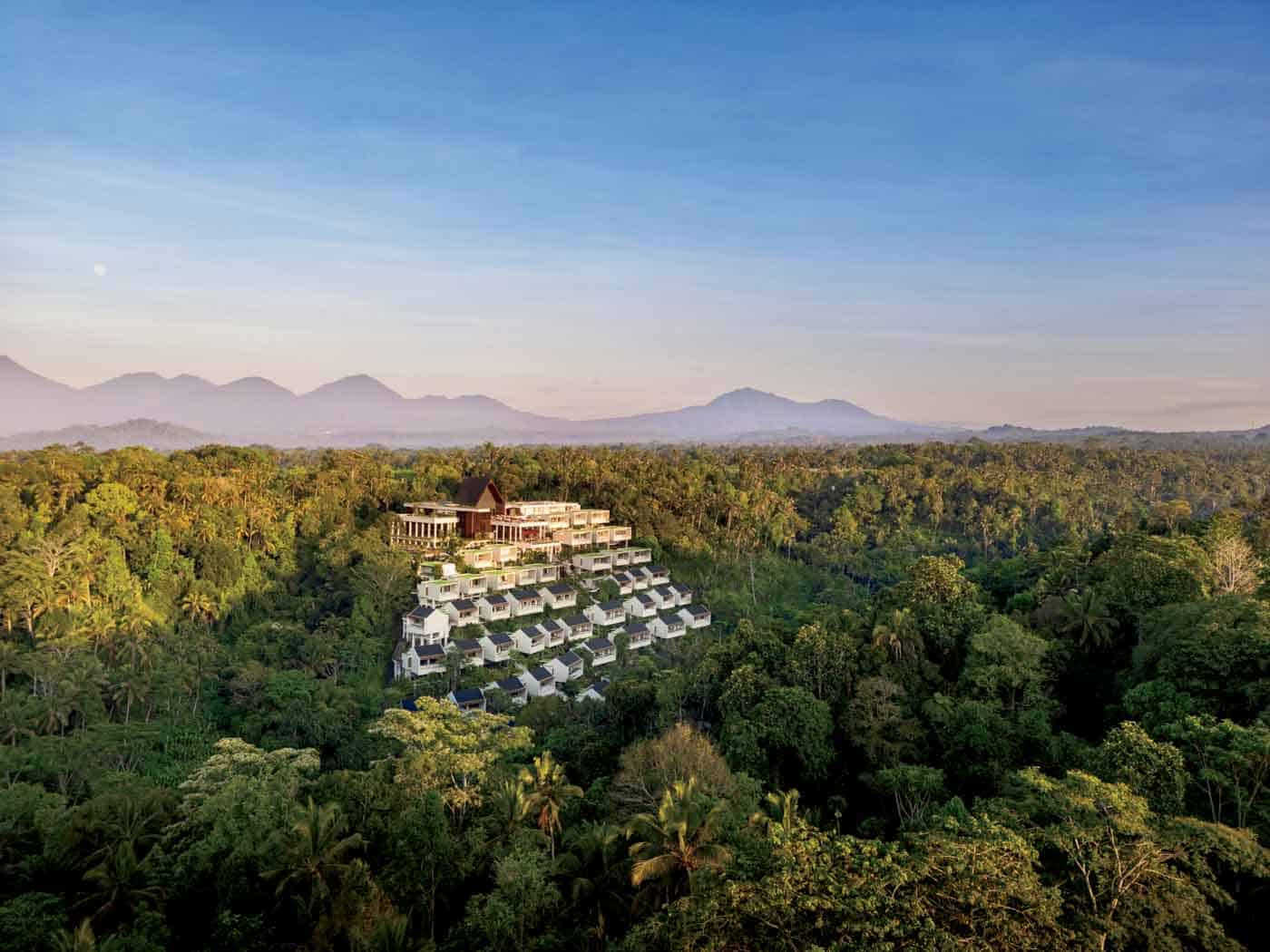
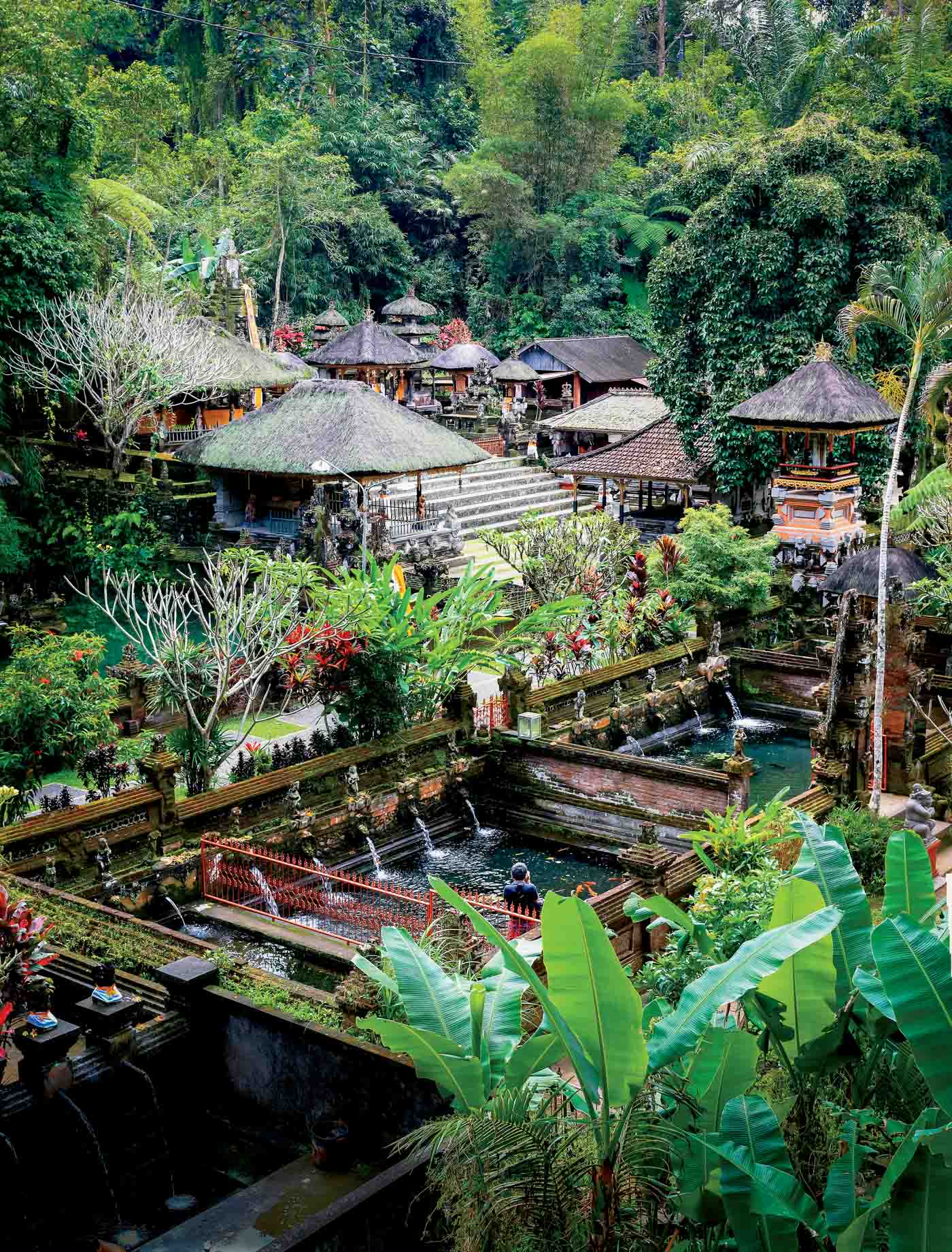
As we left the coast and ventured into the island’s interior, we wound along narrow, twisty roads bordered by a stunning patchwork of bamboo forests, temples, and rice paddies. No trip to Ubud would be complete without visiting the Tegallalang Rice Terrace—famous for its beautiful, jade green rice paddies. Be sure to take a photo in one of the photo op pods—it was my favorite snapshot of the trip!
En route to the resort, we stopped at the renowned John Hardy design compound, a breathtaking space showcasing his iconic jewelry. Here, we observed skilled artisans, participated in a hands-on Masterclass workshop, and browsed the beautifully crafted pieces.
A short drive thereafter, we arrived at the premium eco-friendly Anantara Ubud Bali Resort. Nestled in the serene hillside village of Payangan, just 35 minutes from the cultural center of Ubud and 1.5 hours from Bali’s international airport, the resort offers Anantara’s signature luxury in the heart of the rainforest. Surrounded by 360-degree views of the jungle and Mount Agung—an active volcano revered as the divine palace of the gods—the setting is mesmerizing.
The resort’s 85 elegantly furnished suites and pool villas, adorned in neutral color palettes with subtle Balinese influences, blend seamlessly with the lush surroundings. To reach my villa, I rode a funicular deep into the jungle. My two-bedroom villa featured a living room, dining room, and a patio edged with a 33-foot-long infinity pool that seemed to float above an emerald sea of trees. Floor-to-ceiling windows and bathroom walls that opened to the jungle created a harmonious connection with nature.
The resort offers two restaurants. For our first meal, we chose the charming Kirana Restaurant, which serves authentic Indonesian cuisine. “Kirana” originates from the Sanskrit word meaning “beam of light,” a name inspired by the venue’s radiant views. Sitting outside beneath a canopy of twinkling lights, surrounded by dense tropics, and an abundance of tabletop blooms, we dined on a feast of lawargedang (young papaya salad bathed in traditional Balinese flavors), ayampelalah (roast chicken, sambalmerah, crispy shallot, kaffir lime, served on a betel leaf with tamarind dipping sauce), and bebek taliwang (grilled duck marinated in taliwang spices, tomato sambal, fried lemongrass, and kaffir lime). Several of us decided to end the evening with a visit to Sulang Bar, where the master mixologist whipped up signature cocktails. Against a backdrop of the mist-shrouded Mount Agung, we toasted our great fortune of being together.
On our final night, we chose the five-course degustation menu at Amerta an open-fire restaurant inspired by the jungles of Payangan. Perched on the resort’s second floor, the restaurant offers a wonderful view of lush rice terraces. The resort’s executive chef—who worked with multi-Michelin-starred restaurants around the world before joining the Anantara team—presented the meal with artistic flair. We savored Citrus Cured Red Snapper, Dry Aged Mahi Mahi, Gilled Tokusen Wagyu Sirloin (melt in your mouth and served with charred onion and peppers, miso, star anise beef jus, and an andaliman pepper béarnaise), Red Dragon Fruit with vanilla creme and a Chocolate & Kluak Cremieux (caramelized popcorn and salted caramel sauce). Amerta uses all locally sourced, sustainable produce blending the jungle’s essence into every dish.
Spa
The resort’s tranquil spa offers an array of treatments. Led to my experience room, I entered to find a wall of windows open to the rainforest. I chose the Taksu Massage, a traditional ritual combining techniques of Japanese shiatsu bodywork, Hawaiian lomi lomi kneading, and elements of Balinese massage. It was a combination of forest bathing and massage with birdsong in the distance. Lovely!
Cultural activities in Ubud
Everywhere we went, we saw little baskets in front of houses, temples, and storefronts. These are banten or daily offerings to the gods given as tokens of gratitude.
The resort hosted a hands-on class where we learned the art of banten. Our banten used colorful flowers, each symbolizing a different philosophy and each placed in a specific direction. White flowers point to the east, a symbol of Iswara (Shiva), one of the leaders of the gods. Red flowers point to the south, a symbol of Brahma, the god of creation. Yellow flowers point to the west, a symbol of Mahadeva, who manifests in the form of a man with a third eye on his forehead. Green flowers point to the north, a symbol of Vishnu, described as a blue being, holding flowers in his four hands.
Once our offerings were complete, we walked to the resort’s temple dressed in kambens, brightly colored hip cloths that are proper temple attire. Before we made our offering, we added an incense stick—the Balinese believe that the incense smoke acts as a bridge to the gods.
One afternoon we headed off campus for a Melukat, a water ritual that is an integral part of Balinese spiritual culture. Bali is home to more than 1,000 water temples, and Balinese Hinduism considers water to be a sacred element that serves as a medium to purify the mind, body, and soul. We initially planned to visit the popular 9th-century Mengening Temple in the Saresada Village. However, downed trees prevented our visit, so we ventured instead to the 11th-century Gunung Kawi Sebatu Temple, a less crowded site nestled amidst the teeming greenery of the Tegallalang region.
The area is a complex of structures and small carved statues—all cloaked in soft green moss. Fed by a volcanic spring believed to hold healing and cleansing powers, the temple features two small bathing pools. Each pool contains five intricately carved stone spouts, designed to resemble faces, with water cascading from each “mouth.” The ritual began with a quiet moment of intention-setting and prayer. After stepping into the water, I approached the first spout, placed my offering, and said a prayer with my hands joined in the traditional Hindu posture. Repeating the prayer, I splashed my face three times, doused the top of my head three times, and finally bent so that the water stream hit the crown of my head (for a count of three). This is repeated at each of the five spouts. I then proceeded to the second pool and repeated the process. The purpose of Melukat is to wash away negative energy and welcome good energy. Standing in the sacred waters surrounded by the Tegallalang jungle, I felt an overwhelming sense of peace.
Another unforgettable immersion into Balinese culture was the Agni Yajna—a sacred fire ceremony honoring Agni, the fire deity. We experienced this tradition, which is believed to purify the surroundings and invite divine blessings into one’s life, during a visit to a local Hindu priest’s family temple. The priest clad in a black sarong with a top knot crowning his head, sat serenely with other family members around a fire on the temple’s raised platform. We joined them, sitting crosslegged around the flames. Each family member wielded a different instrument—seashells, drums, horns, bowls, and bells—and, as the ceremony began, a symphony of sound and rhythm filled the air. Chanting and singing accompanied the offerings, and we intuitively joined in— chanting and singing along, understanding when it was our turn to feed the fire with handfuls of rice. I felt a profound connection to the family throughout the ceremony—ages, languages, and backgrounds faded away around the fire. The hours-long ceremony felt fleeting and was a joyous, emotional, and transformative experience. As the ritual unfolded, everyday life carried on around us. Children, chickens, and goats wandered through the compound, while the family dog, Coocoo, seemed utterly unfazed, lounging belly-up behind the priest’s mother.
Back at the resort, swimming laps was a favorite and meditative activity. Each time I paused overlooking the infinity pool’s edge, I was captivated by the foliage so dense that the jungle floor remained completely hidden—only the distant sound of a river hinted to its existence. Overhead, swallows darted gracefully through the air, while butterflies drifted from flower to flower. In those tranquil moments, I couldn’t help but reflect on how fortunate I was to visit this beautiful island.
From Uluwatu’s cliffside shores to Ubud’s mystical jungles, Bali whispers tales of adventure and serenity to those willing to listen. Apply for your visa, grab your passport, and book a flight—a spiritual and earthly paradise awaits.
For more information, visit anantara.com/en/uluwatu-bali, anantara.com/en/ubud-bali, uluwatutemple.com, savaya.com, gunungkawisebatu.com, tegallalangriceterrace.
Sign Up for the JWC Media Email